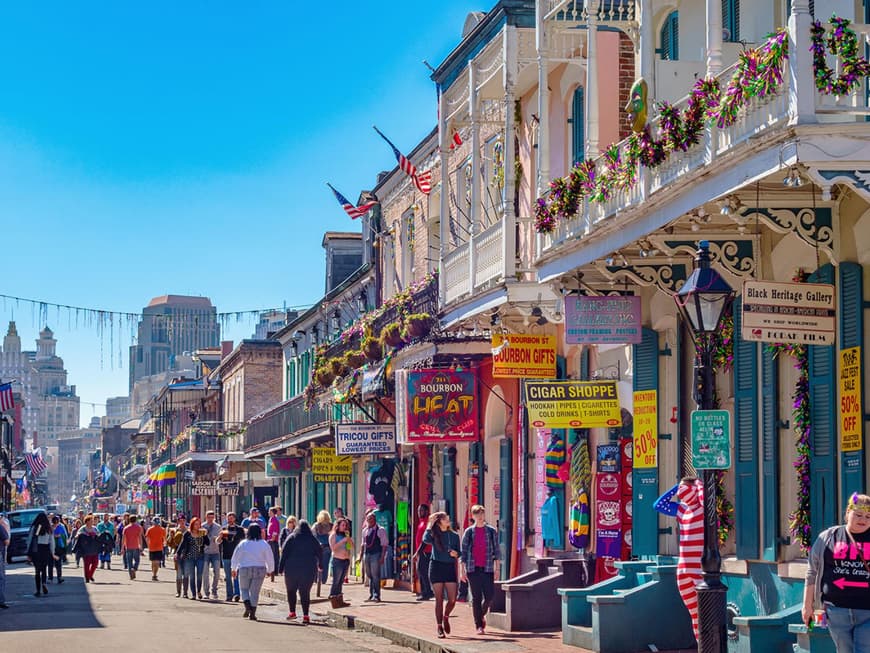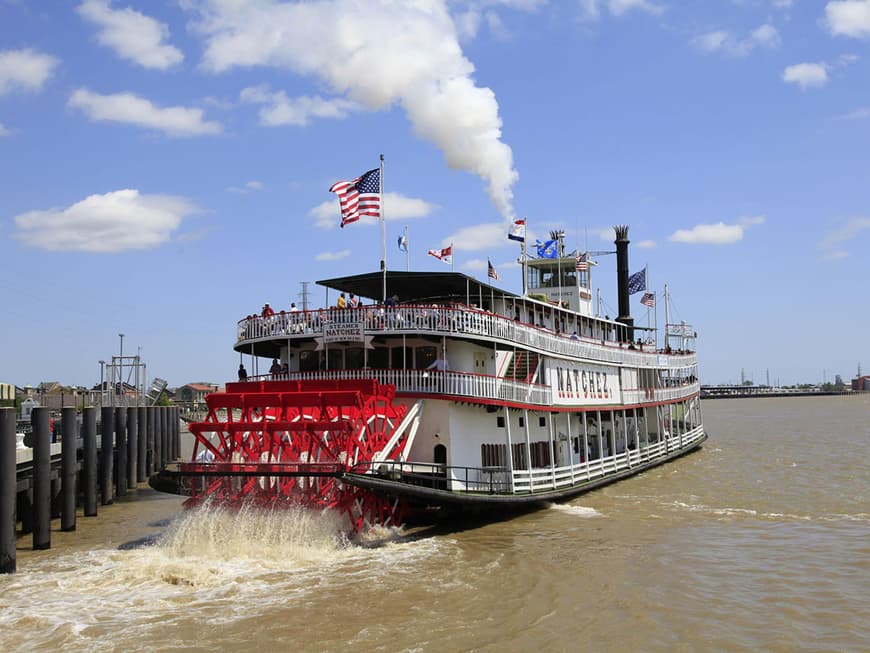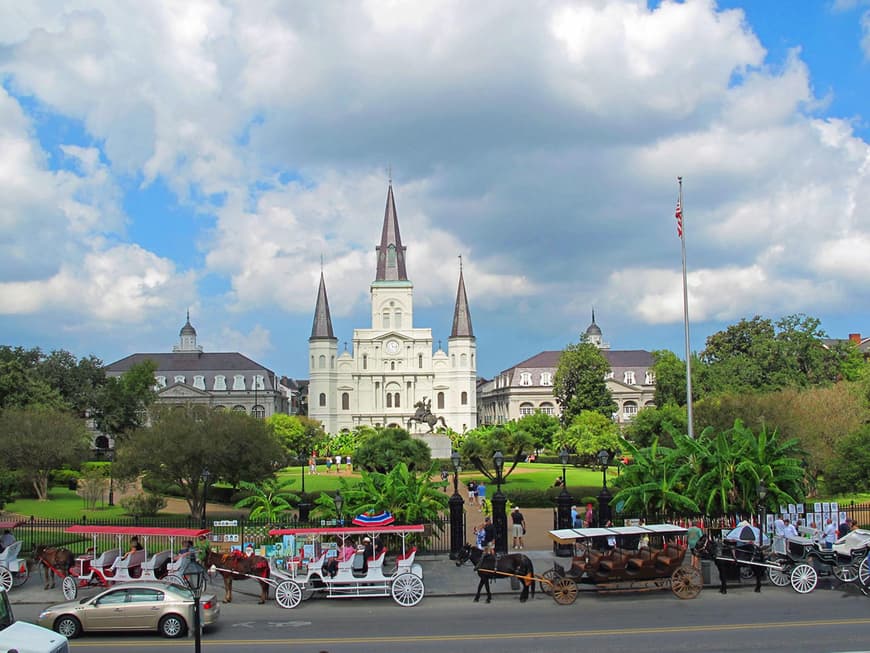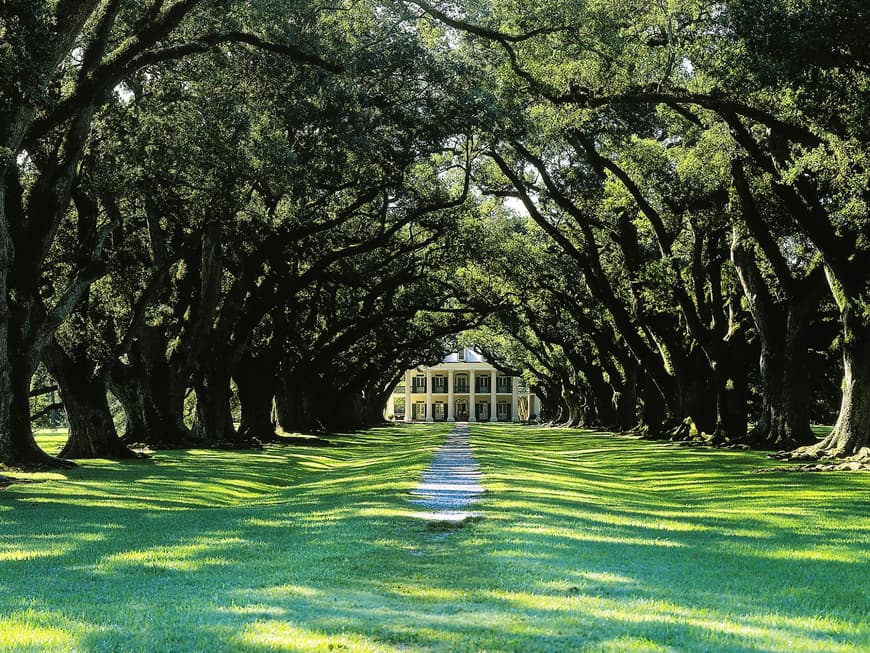This is where the music plays!
The saxophone solos resound through the French Quarter. Here, in the historic old town with its colorful houses from the colonial era, beats the heart of New Orleans. Founded by French settlers in 1718, the city fell to the Spanish in 1762 - a brief excursion into history. In 1800 it belonged to France again, and in 1803 Napoleon sold it to the USA.
The most famous street in the French Quarter is Bourbon Street. Here, the jazz, blues and soul sounds wafting out of the music clubs, restaurants and cafés merge with the sound of the street musicians who have "What A Wonderful World" in their permanent repertoire.
Stately villas and beautiful gardens
In the Garden District, we experience just how wonderful the world is that Louis Armstrong sang about in the song that made him immortal. The oldest streetcar in the world takes us to this leafy district. And really: you don't see stately mansions and beautiful gardens like those along St. Charles Avenue every day.
As night falls, we are drawn to the area around Jackson Square. And even though the Hurricane cocktail at Pat O'Brien's is very tempting, we don't stay in a bar. After the drink, whose name is not a reference to Hurricane Katrina, we hit the clubs in the French Quarter.
One highlight is the legendary "Preservation Hall", where real New Orleans jazz is played. The Old U.S. Mint Museum, where we marvel at the cornet on which Louis Armstrong learned to play as a twelve-year-old, is a must-see in broad daylight.
With timpani and trumpets
New Orleans celebrates Mardi Gras with drums and trumpets, which reaches its climax on Shrove Tuesday. It transforms the old town into the biggest party zone in the USA and a paradise for imaginatively costumed people. Loudly led by brass bands, the parades wind their way through the streets. Beads are thrown from colorful floats: Glass bead necklaces that women stretch their necks and hands towards. As accommodation is rare during the carnival season, it is best to arrive days before February 28.
Visitors are welcome at any time of day or night at the "Café du Monde". It is open around the clock, 364 days a year - except on Christmas Eve. Its specialty is beignets, a lard pastry dusted so thickly with powdered sugar that it lands on my blouse because I don't open my mouth wide enough. "Take it easy," the waitress advises and laughs. I laugh along with her. It's nice that the cheerful serenity of the people here rubs off on me.
The big easy
"The 390,000 inhabitants call their city "The Big Easy". They take life lightly - and have a special relationship with death. This refers to the locals' penchant for cemeteries and funerals with upbeat jazz music.
Those who don't share this preference will be enchanted by the Oak Alley Plantation in Vacherie, 48 kilometers away. It reflects the former glory of the southern states in the best "Gone with the Wind" style. Scarlett O'Hara fans can hardly believe that this epic film was shot entirely in a Hollywood studio. However, the plantation was the backdrop for the film "Interview with a Vampire" starring Brad Pitt.
"Careful with the bite," quips our guide on the boat tour through the swamps of Cajun Country when alligators appear. To his great delight, there are also crayfish en masse here, which, steamed and home-pulled, people in Louisiana lick their fingers for.
A triad of Louisiana cuisine, live jazz and Mississippi romance awaits us on the paddle steamer "Natchez". On board, I discover my love of bread pudding and Dixieland and feel as free as Huckleberry Finn. With the New Orleans skyline in view, everything is in perfect harmony.






